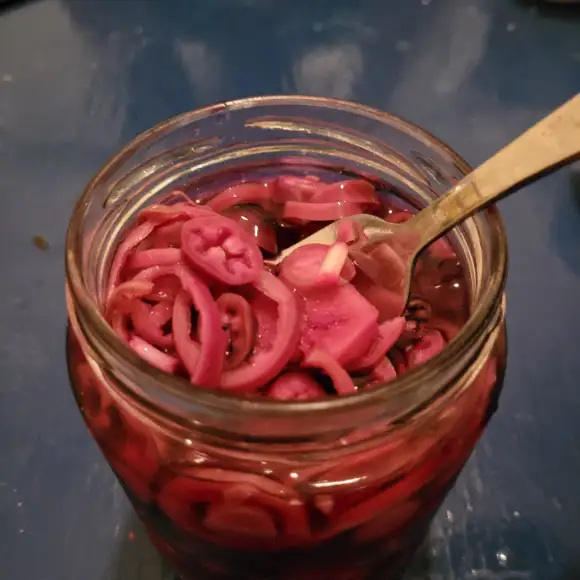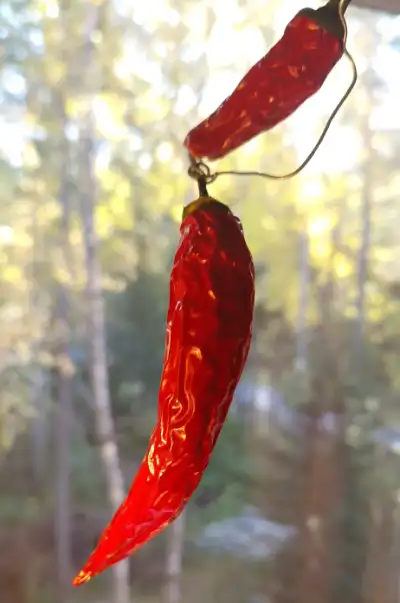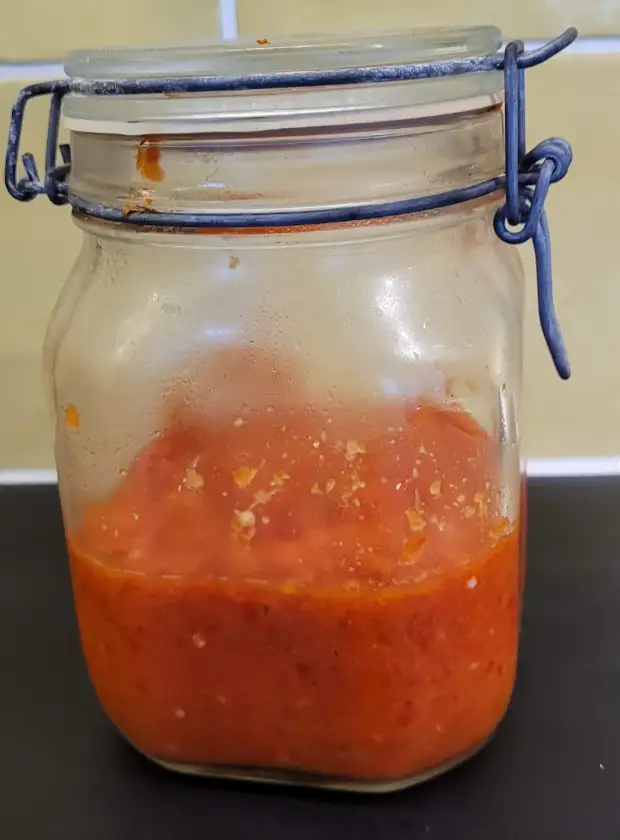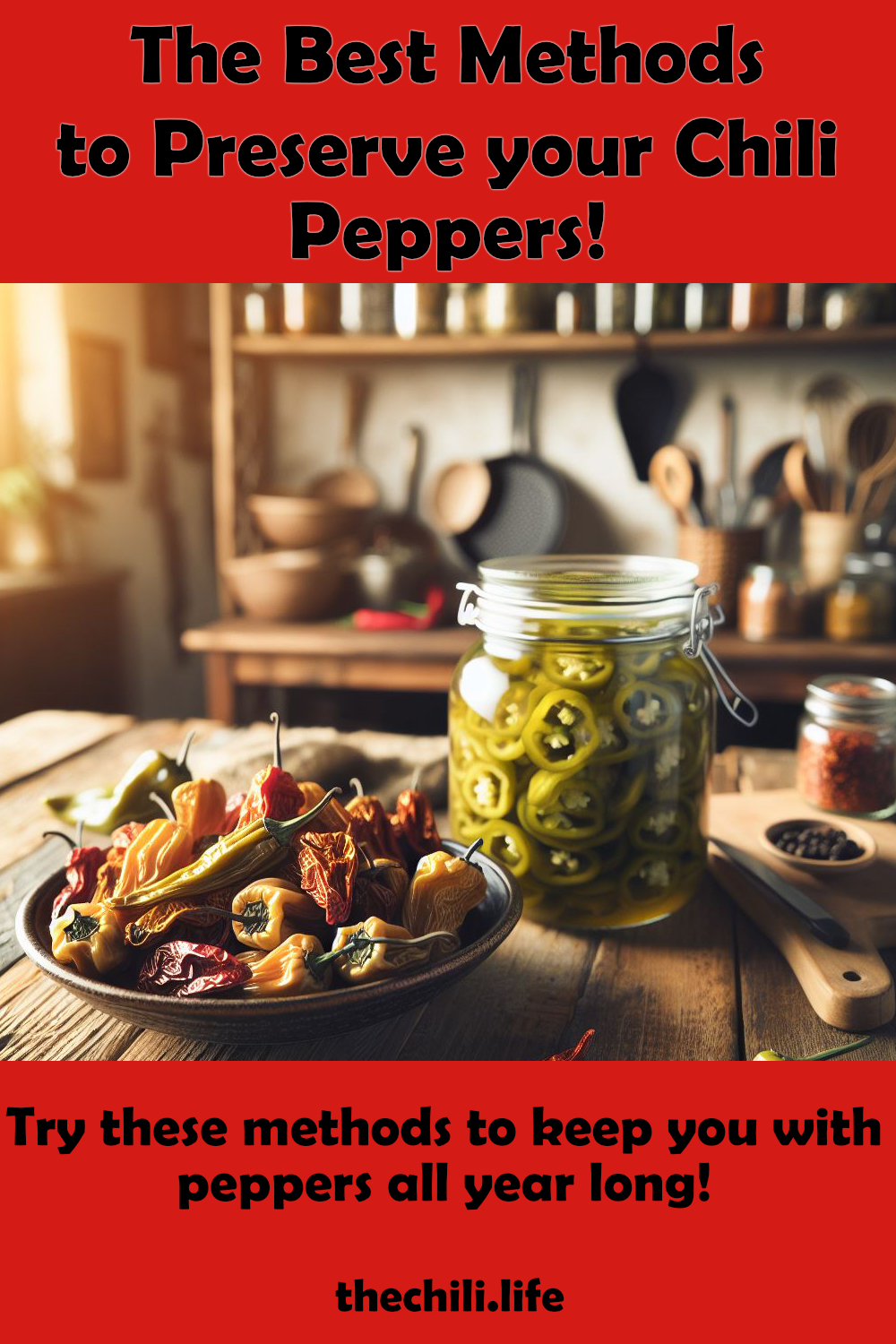How to Preserve Hot Peppers: From Freezing to Fermenting
In this post, I will briefly show you how to preserve hot peppers from the garden. If you’ve successfully grown your hot peppers, you may now have too many and wonder what to do with them. Then this post is for you.
Table of Contents
How to Preserve Hot Peppers
Several methods exist to preserve your fresh hot peppers so they last longer and retain their flavor. Here are some of my favorite ways to preserve chiles:
1. Freezing Hot Peppers
Freezing is one of the easiest ways to preserve hot peppers. Wash the peppers thoroughly, remove the stems, and cut them into slices or leave them whole. Place them on a baking sheet in a single layer and freeze until solid. Once frozen, transfer the peppers to an airtight container or freezer bag. This method retains the heat and flavor of the peppers for months. Finally, because this is a quick and easy method I think it is one of the best ways to preserve hot peppers.
2. Pickling Hot Peppers
Pickling is another excellent method to preserve hot peppers. Here’s a simple guide on how to preserve hot peppers in vinegar:
- Wash and slice your fresh hot peppers. You can leave the seeds in for extra heat.
- Prepare a pickling solution with two dl (roughly 1 cup of vinegar), two dl (approximately 1 cup) of water, one tablespoon of salt, and one tablespoon of sugar. Bring this mixture to a boil.
- Place the pepper slices in a sterilized jar and pour the hot pickling solution over them.
- Seal the jar and let it cool to room temperature before storing it in the refrigerator. This method preserves the peppers and infuses them with a tangy flavor.

3. Drying Hot Peppers
Drying is a traditional method to preserve hot peppers, intensifying their flavor. Here are some ways to dry hot peppers:
- Air Drying: String the hot peppers and hang them in a dry, well-ventilated area. This method works best in climates with low humidity.
- Oven Drying: Cut the peppers in half and remove the seeds. Place them on a baking sheet and dry them in the oven at a low temperature (about 60°C/140°F) for several hours. I typically put a spatula between the oven and the door so it is not entirely closed.
- Dehydrator: If you have a food dehydrator, drying your peppers can be efficient. Follow the manufacturer’s instructions for the best results.

I don’t own a dehydrator yet, so I typically air-dry my chili peppers. Finally, I think this is one of the best ways to preserve peppers because there are plenty of easy ways to use your dried chiles in cooking later. Here are some posts for your inspiration:
4. Making Chili Oil
Chili oil is a flavorful way to preserve hot peppers. Here’s a quick method:
- Heat two dl (approx. 1 cup) of oil (such as canola or olive oil) in a pan until it’s hot but not smoking.
- Add 0.5 dl (approx. 1/4 cup) of dried hot pepper flakes and let them steep in the oil for 10-15 minutes.
- Strain the oil into a clean, sterilized bottle and let it cool. Store the oil in the refrigerator to prolong its shelf life.
Note that chili oil lasts quite long when unrefrigerated – 6 months or so.
5. Fermenting Hot Peppers
Fermentation is a popular method for making hot sauce and preserving peppers.
- Start by washing and slicing your peppers. Place them in a jar with a saltwater brine (1 tablespoon of salt per 2dl/1 cup of water).
- Weigh the peppers down with a fermentation weight or a small, clean jar to keep them submerged.
- Cover the jar loosely with a lid or cloth to allow gases to escape, and let the peppers ferment at room temperature for 1-2 weeks. This method preserves the peppers and adds a complex, tangy flavor.

Concluding Thoughts
In this post, we’ve explored various methods on how to preserve hot peppers, including freezing, pickling, drying, making chili oil, and fermenting. Each method has benefits and can help you enjoy your fresh hot peppers long after the growing season ends. I hope you’ve found these tips useful and are excited to try them out. If you have your own methods for preserving chiles, I am happy to hear about them in the comments below!
Finally, If you found this post helpful, please share it on social media so others can learn how to preserve hot peppers, too!
More Inspiration
Here are some more ideas for you if you have an abundance of spicy peppers:
- What to Do with Too Many Jalapeños: 10 Easy Ideas to Make
- The 13 Best Ways to Utilize Chili Peppers
- What to Do with Extra Hot Peppers
- 7 Crazy Things to Do with Habanero Peppers
